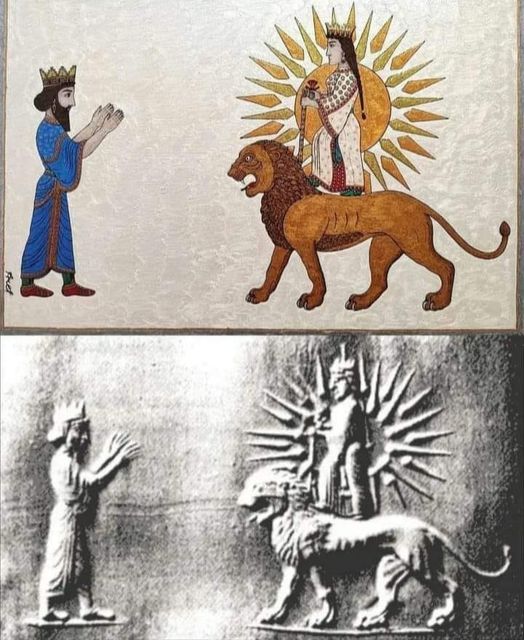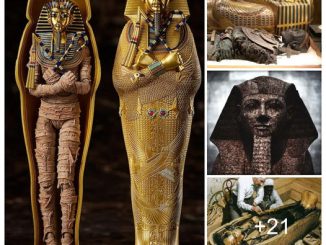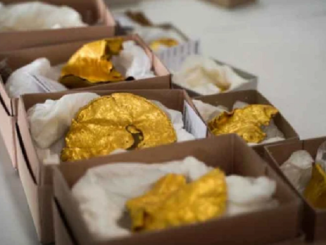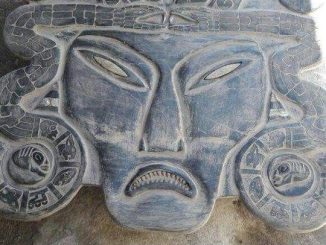The ancient civilization of Sumeria, located in southern Mesopotamia, is often regarded as the cradle of civilization. Spanning from the fifth to the third millennium B.C., Sumeria’s history is intricately linked with the prehistoric Ubaid and Uruk periods. This civilization laid the foundational aspects of urban life, writing, and cultural developments that would influence countless societies thereafter. The story of Sumeria, culminating with the fall of the Third Dynasty of Ur around 2004 B.C., is a fascinating journey into the origins of human civilization. This blog post will delve into the rich history of Sumeria, exploring its rise, achievements, and eventual decline, while inviting readers to view images that bring this ancient world to life.

The Dawn of Sumeria: Ubaid and Uruk Periods
The roots of Sumerian civilization can be traced back to the Ubaid period (circa 6500-4100 B.C.), a time marked by the establishment of the first sedentary agricultural communities. The Ubaid people developed advanced irrigation techniques, allowing them to cultivate the fertile lands of southern Mesopotamia. This period saw the construction of the earliest known temples, indicating a burgeoning religious structure and community organization. The characteristic pottery of the Ubaid period, often decorated with intricate geometric patterns, is a key archaeological marker of this era.
Transitioning into the Uruk period (circa 4100-2900 B.C.), Sumeria witnessed significant advancements in urbanization and technology. The city of Uruk, often considered the world’s first true city, became a central hub of trade, culture, and administration. The invention of writing, specifically cuneiform script, during this period is one of the most remarkable achievements of Sumerian civilization. Initially used for record-keeping and administrative purposes, writing eventually evolved to include literature, legal codes, and personal correspondence.
Images of artifacts from the Ubaid and Uruk periods, such as pottery, temple remains, and early cuneiform tablets, provide a visual representation of these transformative eras. They offer insights into the daily lives, religious practices, and technological innovations of early Sumerians, painting a vivid picture of a society on the cusp of urban and cultural sophistication.
The Apex of Sumerian Civilization
The Early Dynastic period (circa 2900-2334 B.C.) marks the apex of Sumerian civilization, characterized by the emergence of powerful city-states such as Ur, Uruk, Lagash, and Eridu. Each city-state was a politically independent entity, often engaged in both cooperation and competition with its neighbors. This period saw the consolidation of political power, the establishment of sophisticated legal systems, and the construction of monumental architecture, including ziggurats, which served as religious and administrative centers.
The Sumerians made significant contributions to various fields, including mathematics, astronomy, and medicine. They developed a sexagesimal (base-60) number system, which is still used today in measuring time and angles. Sumerian astronomers made detailed observations of celestial bodies, laying the groundwork for future astronomical studies. Medical texts from this period reveal an advanced understanding of anatomy and various treatments for illnesses and injuries.
Cultural and artistic achievements also flourished during the Early Dynastic period. The epic poem “Gilgamesh,” one of the oldest known works of literature, originates from Sumerian myths and legends. The art of this era, including intricate jewelry, statues, and relief carvings, reflects the Sumerians’ skill and aesthetic sensibilities. Viewing images of these artifacts allows us to appreciate the artistic and cultural richness of Sumerian society, providing a tangible connection to their world.
The Fall of the Third Dynasty of Ur
The Third Dynasty of Ur (circa 2112-2004 B.C.), also known as the Ur III period, represents the last great phase of Sumerian civilization. This era is often referred to as the Sumerian Renaissance due to the revival of Sumerian culture, art, and literature. Under the leadership of powerful kings like Ur-Nammu and Shulgi, the city of Ur became a major political and economic center, overseeing a well-organized state that extended its influence over much of Mesopotamia.
The Ur III period is noted for its administrative efficiency, exemplified by the extensive use of cuneiform tablets for record-keeping and correspondence. The Sumerians developed a complex bureaucracy, with detailed records of agricultural production, taxation, and trade. The legal code of Ur-Nammu, one of the earliest known law codes, established principles of justice and order that influenced subsequent legal traditions.
Despite its achievements, the Third Dynasty of Ur eventually succumbed to internal strife and external pressures. The invasion of the Amorites and Elamites, coupled with economic difficulties and political fragmentation, led to the collapse of Sumerian hegemony around 2004 B.C. The decline of the Third Dynasty of Ur marked the end of Sumerian dominance in Mesopotamia, paving the way for the rise of new powers such as Babylon and Assyria.
Images of administrative tablets, statues of kings, and remains of monumental architecture from the Ur III period offer a glimpse into the administrative sophistication and cultural achievements of this final phase of Sumerian civilization. They serve as a poignant reminder of the Sumerians’ lasting legacy and their contributions to human history.
Ancient Discoveries: Unlocking the Secrets of Sumeria
The rediscovery of Sumerian civilization in the 19th and 20th centuries has been a monumental achievement in the field of archaeology. The excavation of sites such as Ur, Uruk, and Lagash has unearthed a wealth of artifacts, including cuneiform tablets, statues, pottery, and architectural remains. These discoveries have provided invaluable insights into the daily lives, religious practices, and technological advancements of the Sumerians.
One of the most significant discoveries is the Royal Cemetery of Ur, which revealed the opulent tombs of Sumerian royalty and nobility. The treasures found within these tombs, including gold jewelry, elaborate headdresses, and intricately crafted lyres, attest to the wealth and artistic prowess of Sumerian society. The discovery of the Standard of Ur, a mosaic depicting scenes of war and peace, offers a vivid portrayal of Sumerian life and social organization.
The translation of thousands of cuneiform tablets has revolutionized our understanding of Sumerian history and culture. These texts cover a wide range of topics, from administrative records and legal codes to literary works and scientific treatises. The Epic of Gilgamesh, for instance, provides not only a glimpse into Sumerian mythology but also philosophical reflections on themes such as friendship, mortality, and the quest for eternal life.
In addition to artifacts and texts, the study of Sumerian architecture has revealed the advanced engineering and construction techniques employed by the Sumerians. The ziggurats, with their massive stepped structures, demonstrate the Sumerians’ ability to mobilize and organize labor for large-scale building projects. The remnants of their irrigation systems highlight their ingenuity in harnessing the natural environment to support agricultural productivity.
Conclusion
The history of Sumeria, spanning from the fifth to the third millennium B.C., is a testament to the ingenuity, resilience, and cultural richness of the world’s earliest known civilization. From the agricultural communities of the Ubaid period to the urban sophistication of the Uruk period, and from the political achievements of the Early Dynastic period to the cultural renaissance of the Ur III period, the Sumerians laid the foundations for many aspects of modern society.
The artifacts, texts, and architectural remains unearthed by archaeologists provide a window into the lives and achievements of the Sumerians, allowing us to appreciate their contributions to fields as diverse as writing, mathematics, astronomy, law, and literature. These ancient discoveries not only enhance our understanding of Sumerian civilization but also underscore the importance of preserving and studying the remnants of our shared human heritage.
As we view the images of Sumerian artifacts and explore the history of this remarkable civilization, we are reminded of the enduring legacy of the Sumerians and their impact on the course of human history. The story of Sumeria is a story of human innovation, cultural development, and the quest for knowledge, serving as an inspiration for future generations to continue the pursuit of understanding our ancient past.


